Definition of Genocide
According to the UN Convention on the Prevention and Punishment of the Crime of Genocide, genocide involves many acts perpetuated with the aim of “destroying in whole or in part, a national, ethnic, racial or religious group”. These include:
- Killing members of the group;
- Causing serious bodily or mental harm to members of the group;
- Deliberately inflicting on the group conditions of life calculated to bring about its physical destruction in whole or in part;
- Imposing measures intended to prevent births within the group;
- Forcibly transferring children of the group to another group.
Raphael Lemkin named the crime as genocide to reflect a coordinated assault on civilian populations.
Genocide takes the phrase, “intent to destroy”. Conversely, crimes against humanity refer to “widespread or systematic attacks against civilians”.
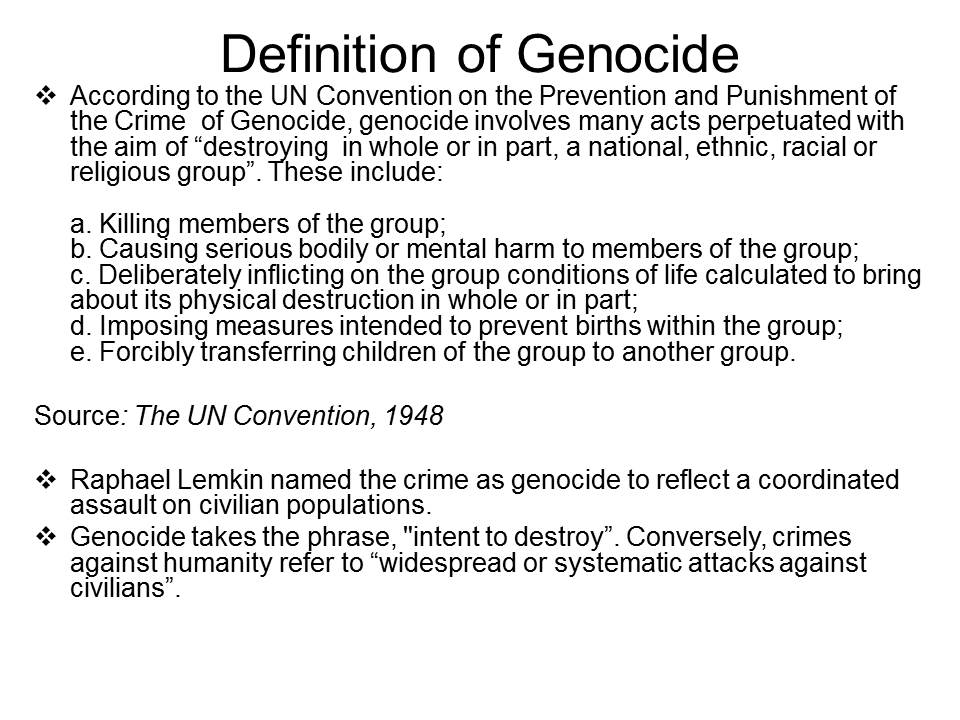
Research on Genocide
- De Waal notes that the 1948 UN Genocide Convention differs from how scholars understand genocide today (De Waal, 2007).
- Scholars have noted that the above definition reflects events of Holocaust. Therefore, understanding the case of Darfur as genocide requires a new approach (Fein, 1990; 2007).
- If events in Darfur constitute genocide, then we must change the way we define and understand genocide (Chirot and McCauley, 2006).
- Nazi adopted a final solution referred to as totalizing (complete destruction).
- The Nazi turned to restructuring policies of mass destruction using mass murder that aimed at Europe populations (Komar, 2008).
- Nazi also used forceful resettlement of populations.
- There was also mass murder known as ethnic cleansing.
- Thus, Holocaust was not a mere ethnic cleansing, but genocide (Schabas, 2008).
The aim was to completely destroy the Jews and Gypsies because the German considered them a “disease” that was a threat to Aryan race.
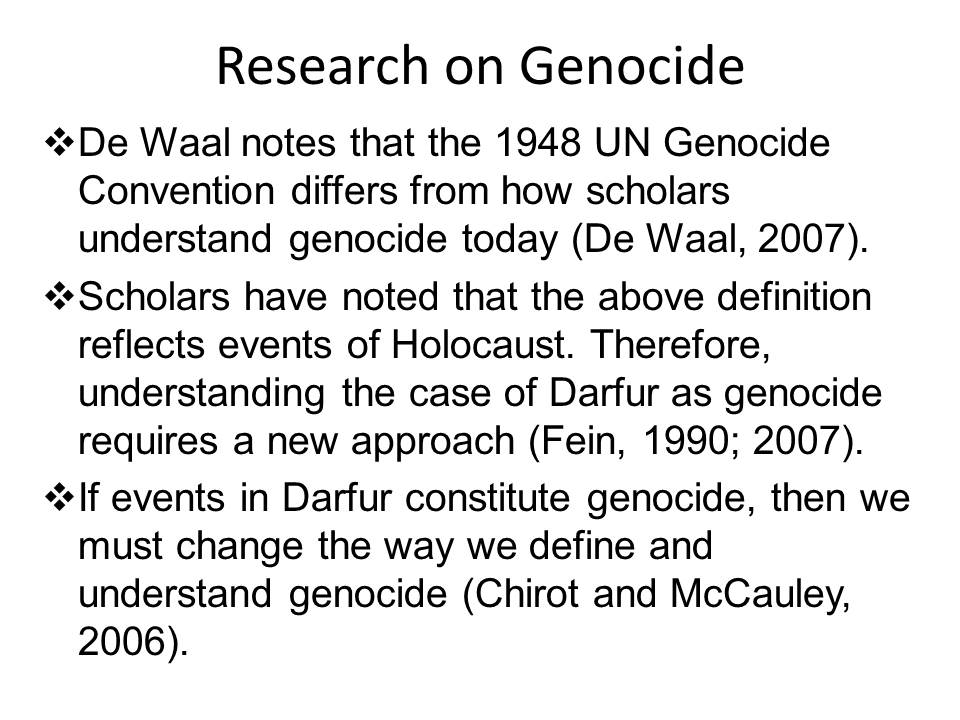
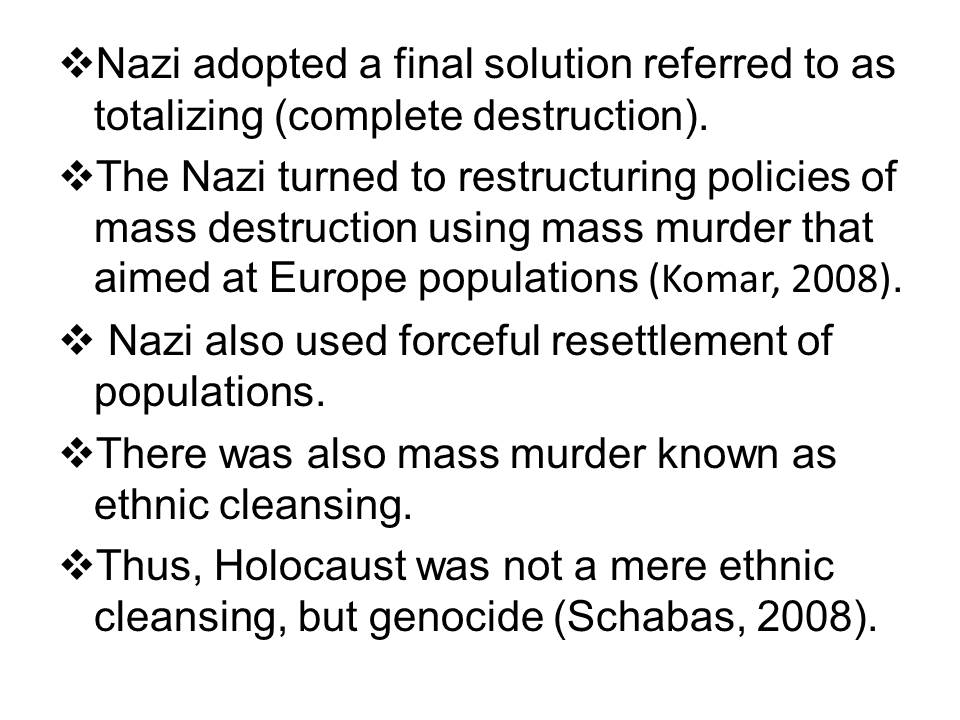
The case of Darfur
According to De Waal, the situation in Darfur raises new questions about events that constitute genocide as these crimes fit “uncomfortably within the definition of genocide” (De Waal, 2007).
It is important to note that there were mass killings, mass rape, and other crimes attributed to racial motives in Darfur (Andreas and Lise-Lotte, 2005).
The Sudanese government (with Arab backing) and its Arab militias (Janjaweed) were responsible for selective murder, rape, and torture of the black Africans in Darfur.

The US position on Darfur
According to the US Secretary of State Colin Powell (2004), events at Darfur constituted genocide. He stated, “genocide has been committed in Darfur and that the government of Sudan and the Janjaweed bear responsibility, and that the genocide may still be occurring” (2004).
This observation was not political in nature.
Colin Powell based the remark on a study the US Department of State commissioned among Darfur refugees in Chad.
The research team concluded that the patterns of violence in Darfur reflected the UN Genocide Convention definition of 1948.
The US Congress voted to classify the Darfur case as genocide in 2004.
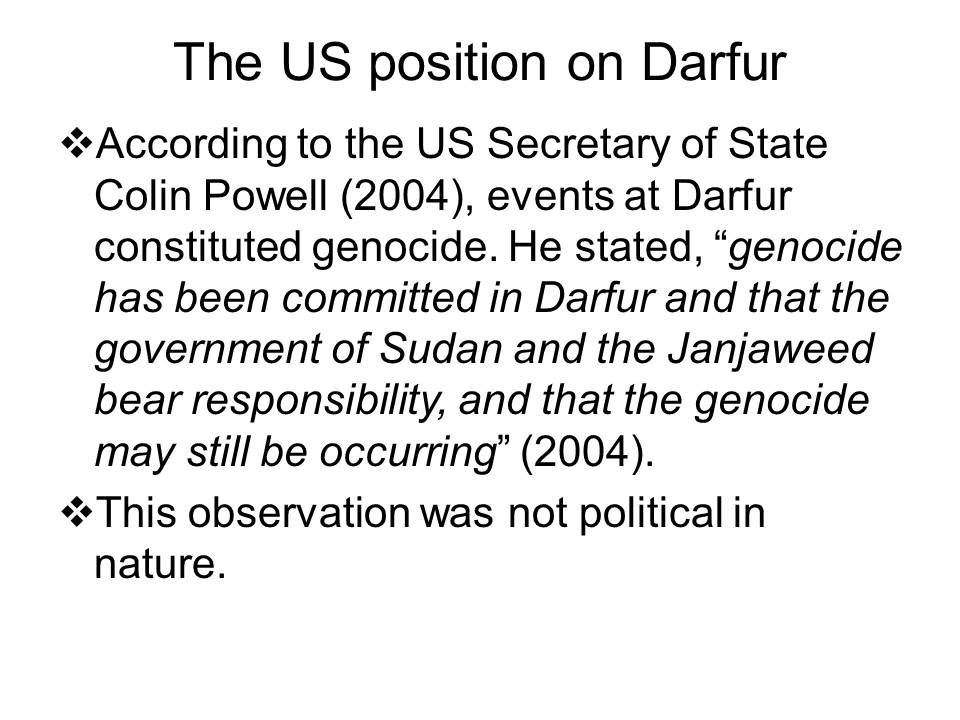
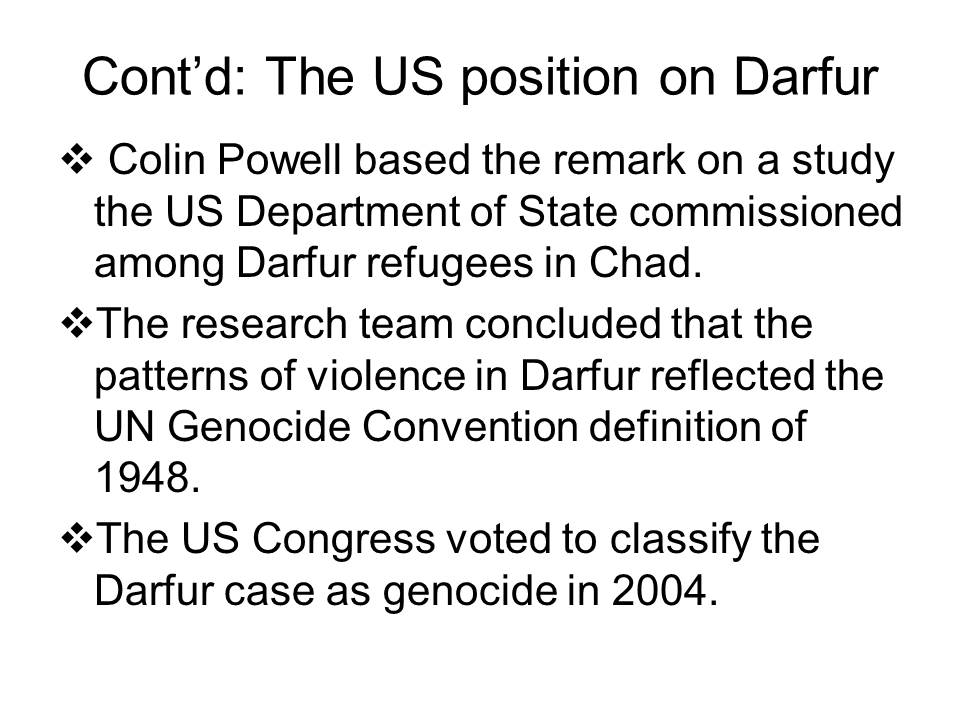
The UN view on Darfur
The UN does not classify the Darfur conflict as genocide.
The UN Commission of Inquiry believes that appropriate terms for Darfur conflicts are “ethnic cleansing” and “crimes against humanity” (The UN Commission of Inquiry on Darfur, 2005).
Why is there a disagreement in the case of Darfur?
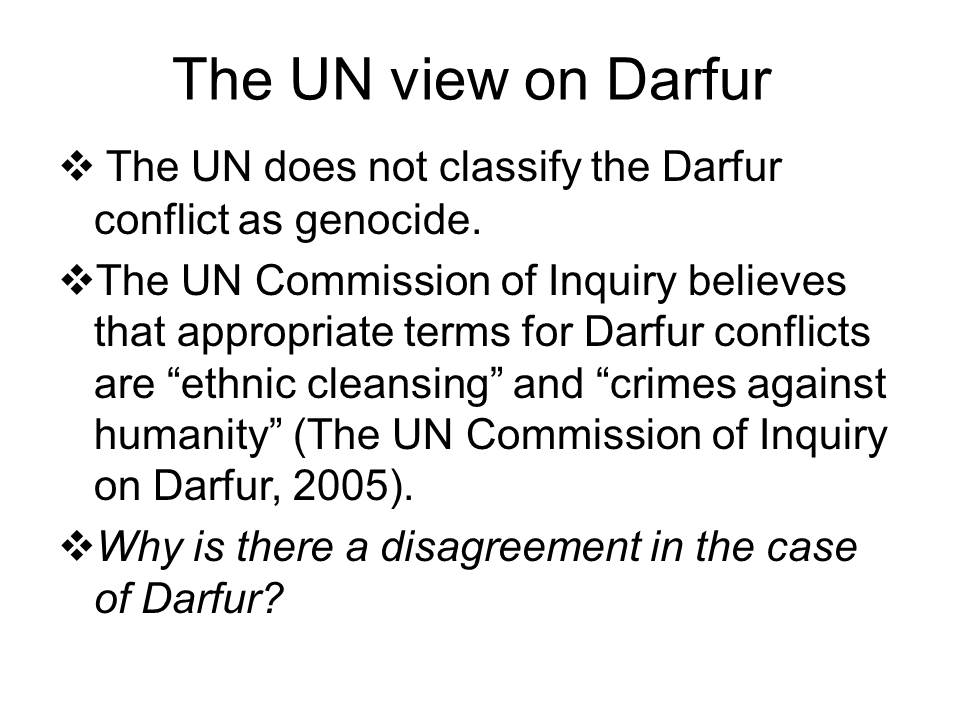
Links with the Genocide
Some studies indicate why the case of Darfur conflict constitutes genocide (Hagan, Rymond-Richmond, and Parker, 2005).
The government of Sudan and its militias are responsible for conflicts in Darfur. They observed that there has been tension between the Arab herders and African subsistence farmers. However, these people often resolved their differences amicably and even intermarried. When the government intervened, it changed the tension into a dangerous ideology of racial hatred.
Racial injustices are widespread when the government and Janjaweed attack. This is because Khartoum government has a racial inclination. Refugees claimed that racial epithets varied depending on the attacker. For instance, the study attributed racial epithets as follows:
- Janjaweed attacks: 16.5%;
- Government forces: 31.9%;
- Both the government and its militias: 44.3 %.
There were links between racial injustices with rape and killings. The conflict was worse when the government introduced race element. There were killings and rape in most families where racial hostility perpetuated the violence.
The activities of attackers affected all villages in equal measure. In other words, whether there were rebels or not, atrocities were always severe.
The attackers targeted a specific race. In fact, attackers did not spare civilians who never opposed the government.
Attackers spared Arabs.
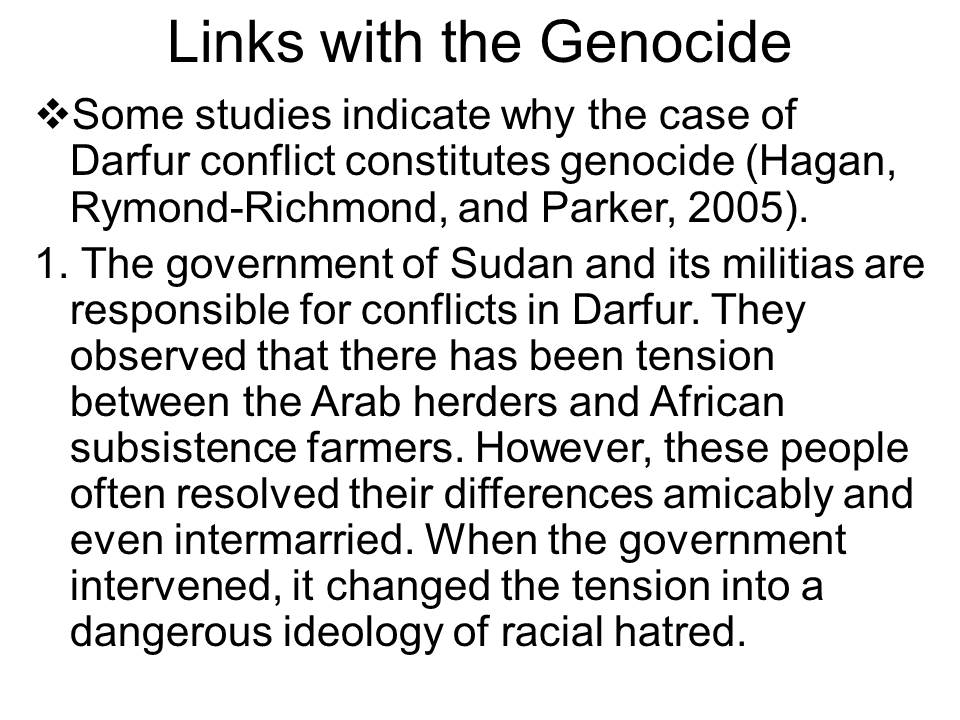
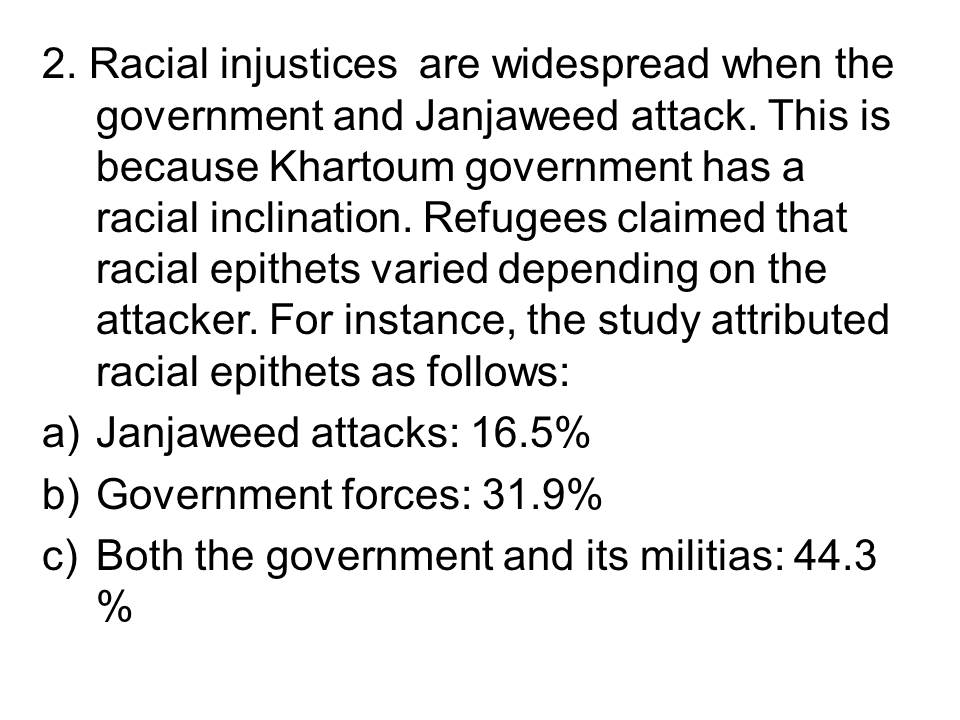
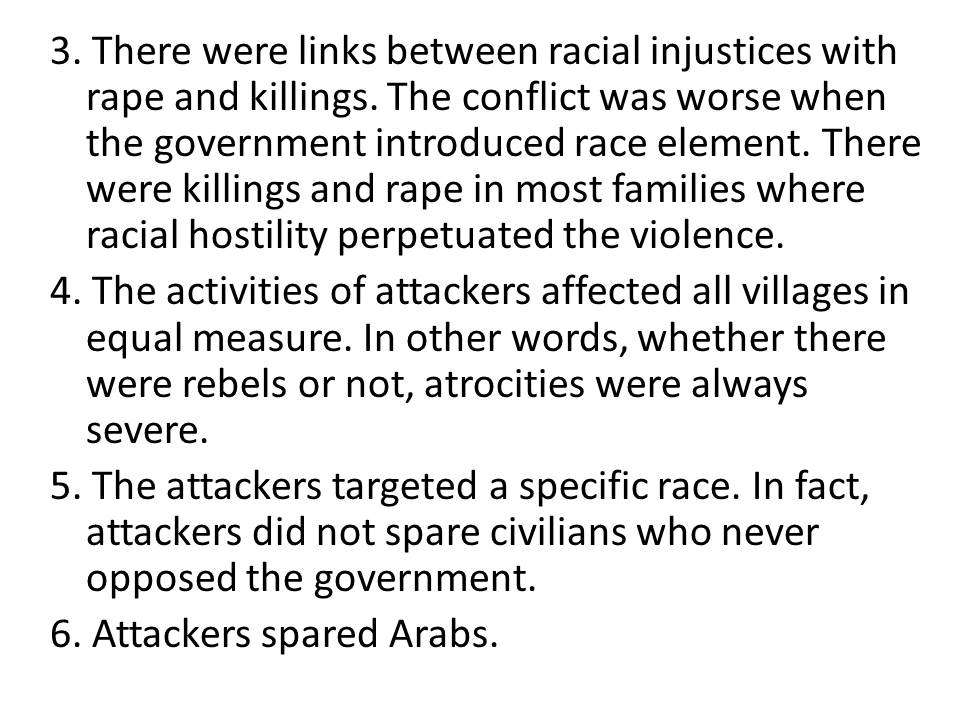
How Darfur case differs from Holocaust
De Waal identified how Darfur case differed from Holocaust and Rwanda.
- Bashir government escalates racial supremacy in Sudan. It uses non-Arab proxies to promote divide-and-rule among Africans.
- Target communities have lived in peace elsewhere. The government and militias only target villagers, but leave Africans in Khartoum, and even accommodate them in the government and military.
- There were also cases of indirect deaths. The government and militias caused displacement and destruction. The displaced populations eventually died of starvation and diseases.
- The conflict had its peaks. The intensities of the violence depended on whether the military had achieved its objectives or not.
- There were cases where the violence had ended from peace deals.
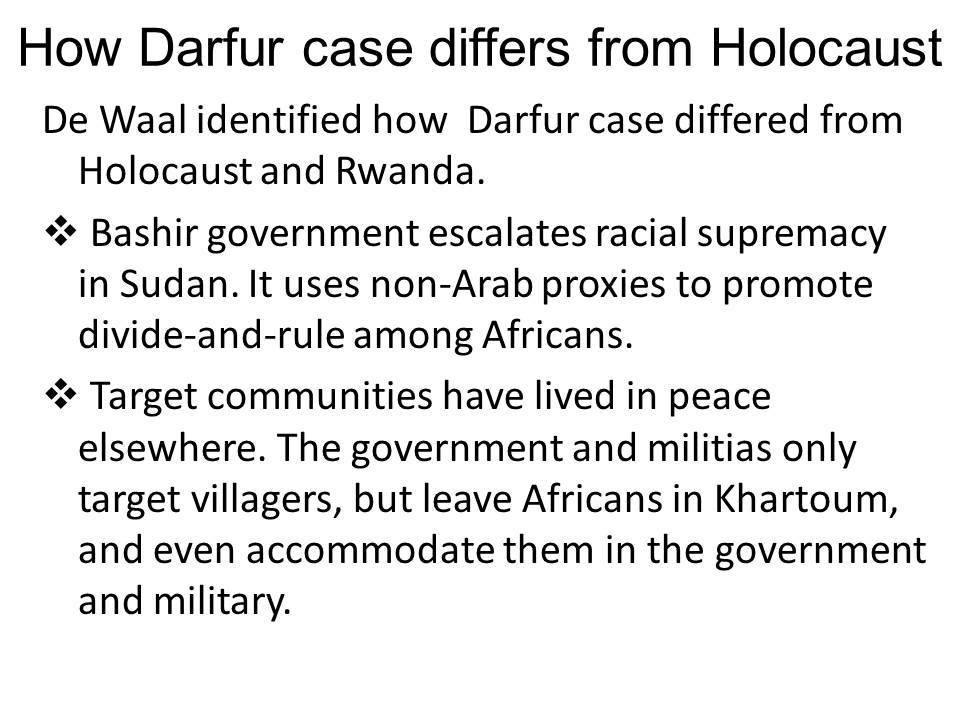
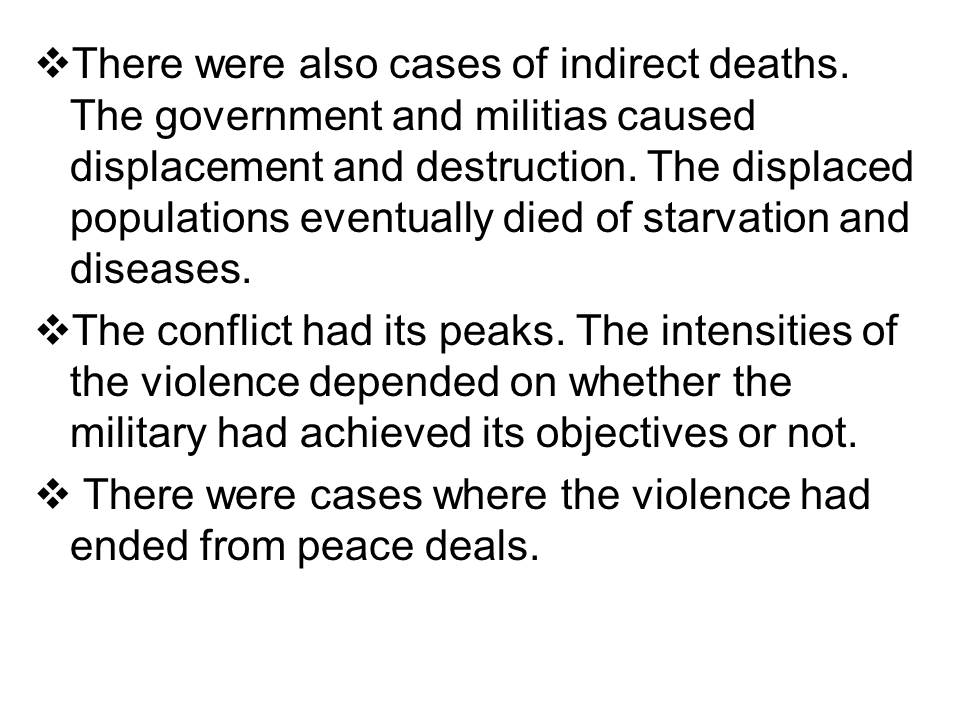
Counter-insurgency Genocide Claims
De Waal argues that the Darfur case can help us understand the concept of a counter-insurgency genocide. The government claimed to defend itself against armed rebels.
The Darfur case also introduced the issue of famine as a weapon of mass destruction. It entailed destruction of property, livestock, farm produce, and prevention of access to aid (Vehnämäki, 2006).
Mass starvation and diseases created a situation of “genocide by attrition”.
The conflict of South Sudan and Sudan still remains unresolved even after South Sudan gained independence.
In this cases, counter-insurgency crimes like rape, murder, and torture have not ended in Darfur, and now the oil-rich Abyei.
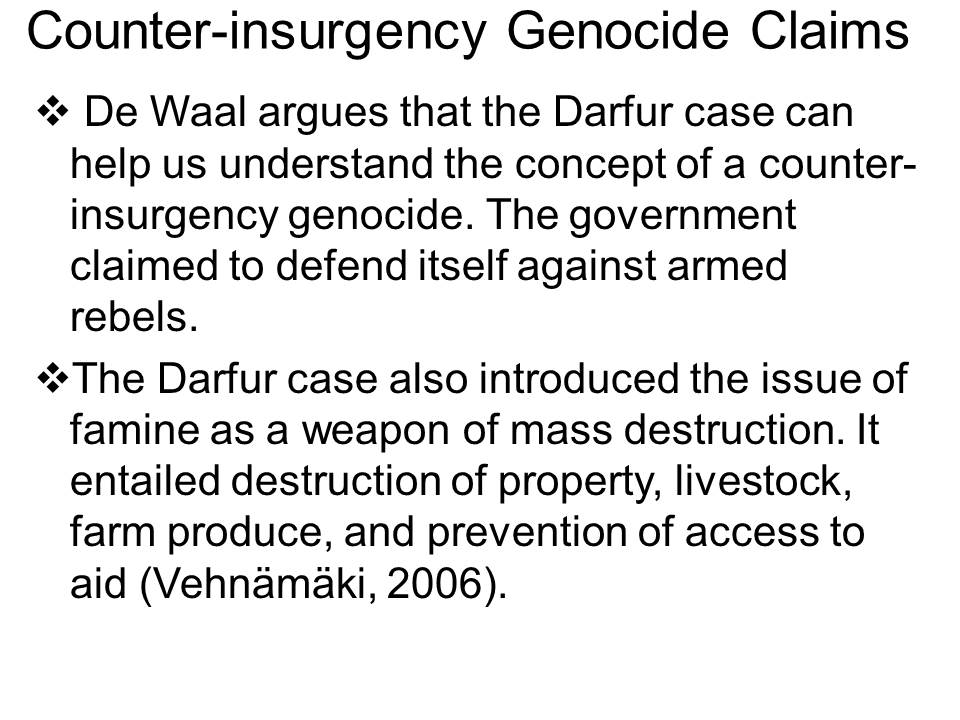
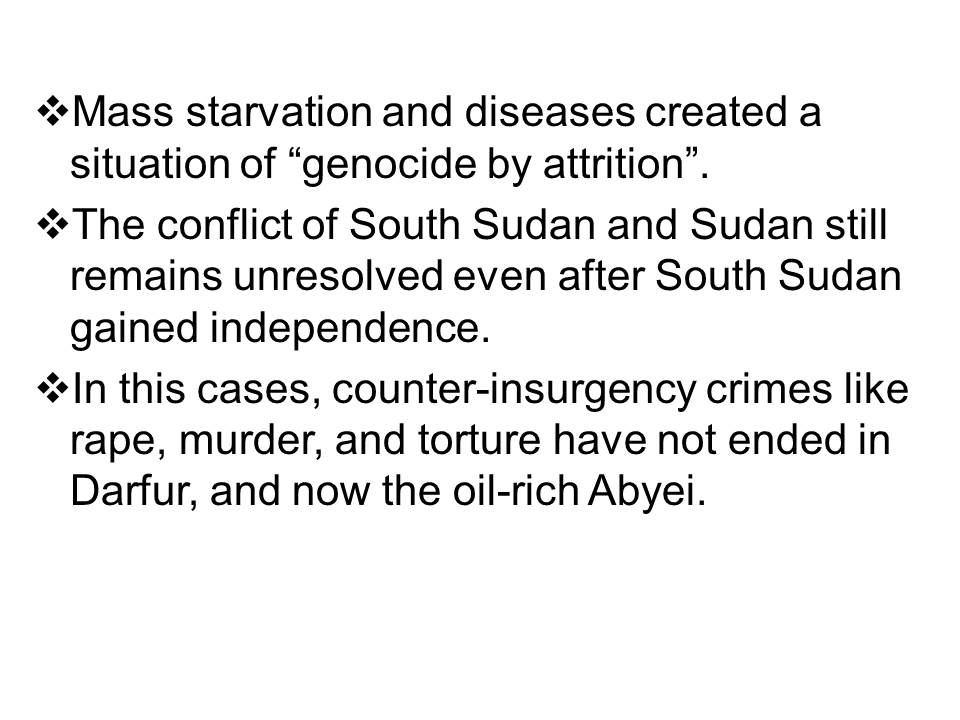
Conclusion
The Darfur conflict has set a precedent for a new approach of understanding genocide since Holocaust.
The UN and the US positions on Darfur differ. We cannot conclude that the UN devalues other heinous crimes in Darfur, but it must find a new definition of what constitute genocide.
Studies have indicated that it is the race issue that predicts occurrences of mass killings and rape in Darfur.
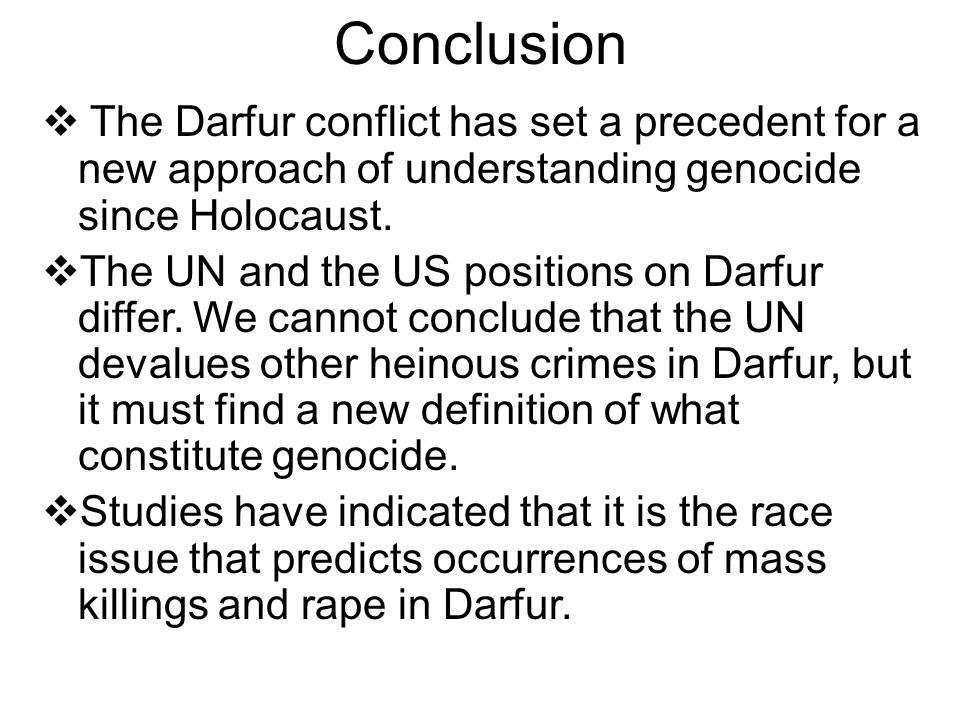
Images For Darfur Genocide – Image Results
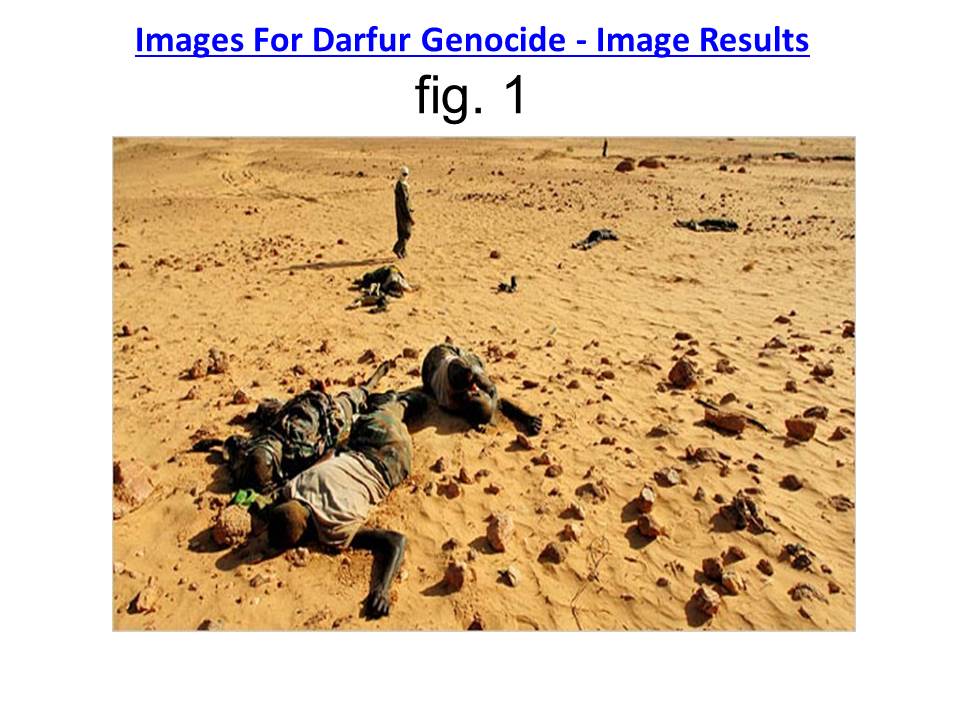
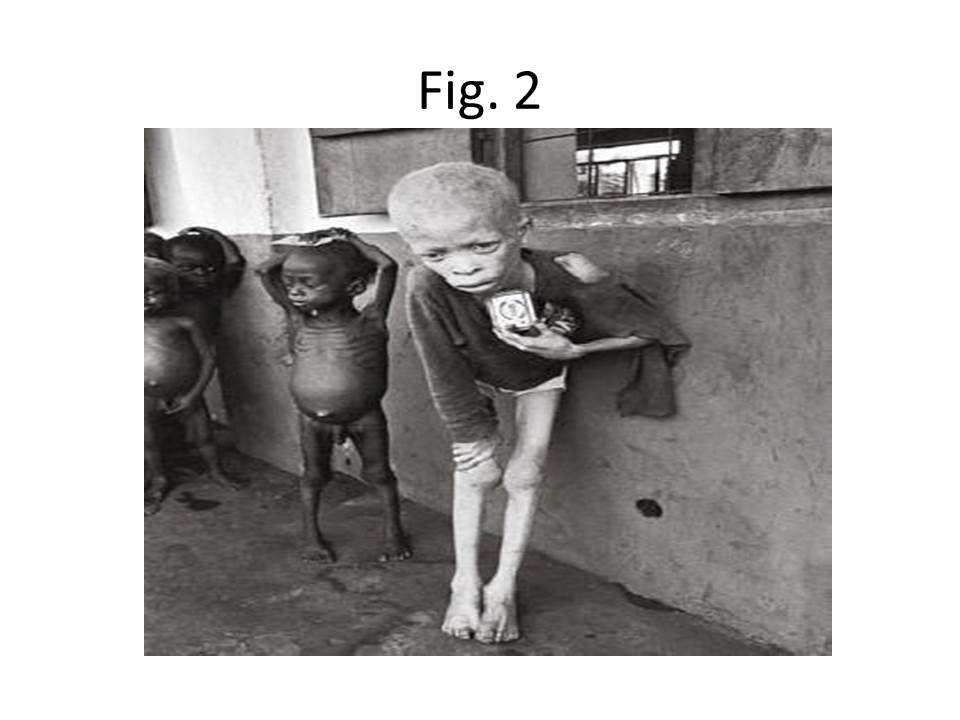
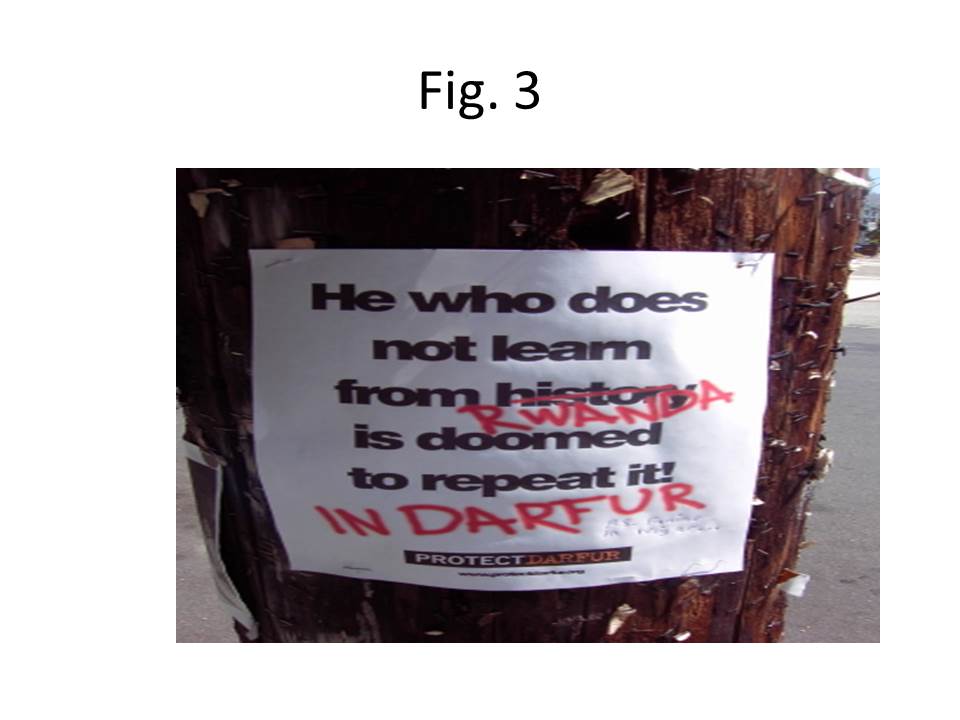
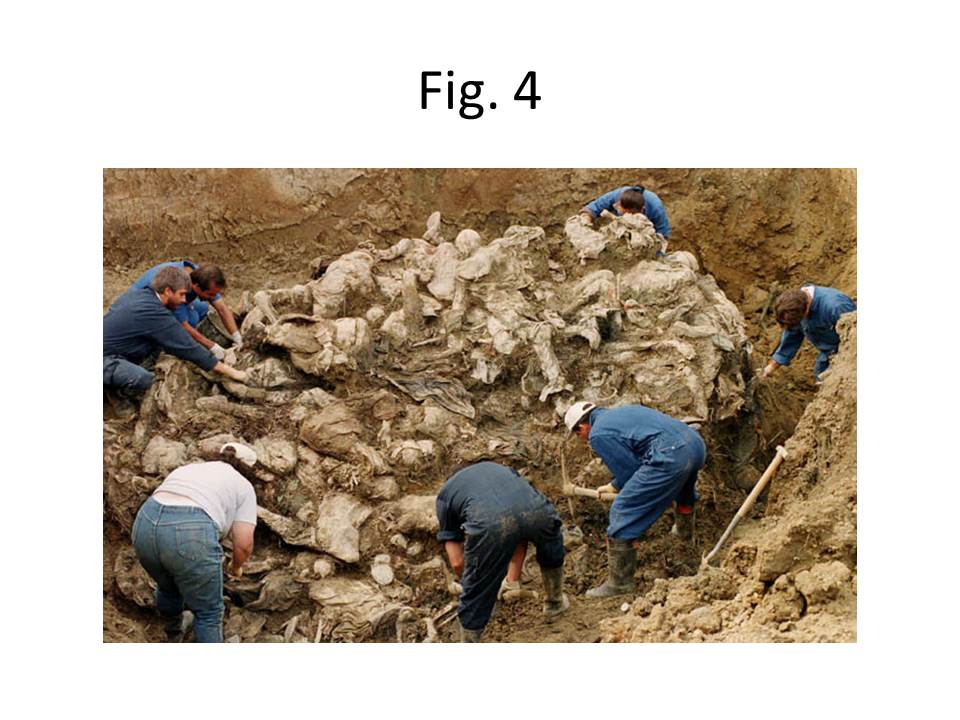
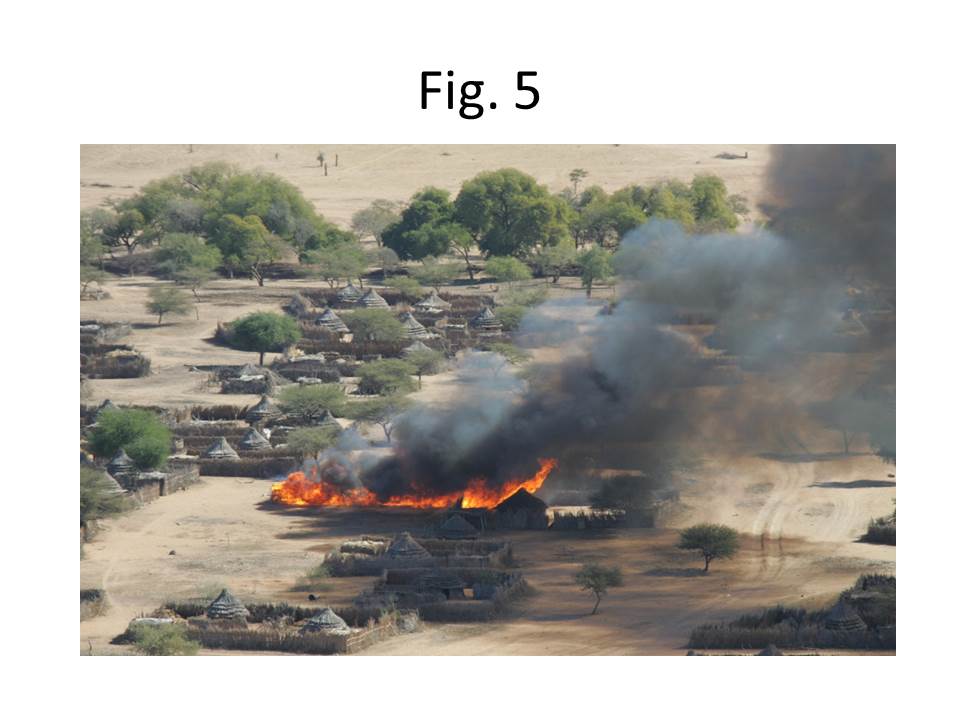
Reference List
Andreas, P and Lise-Lotte, T 2005, The Scorched Earth of Darfur: Patterns in Death and Destruction Reported by the People of Darfur, Bloodhound, Copenhagen.
Chirot, D and McCauley, C 2006, Why Not Kill Them All?, Princeton University Press, Princeton.
De Waal, A 2007, ‘Reflections on the Difficulties of Defining Darfur’s Crisis as Genocide’, Harvard Human Rights Journal, vol. 20, pp. 25-33.
Fein, H 1990, ‘Genocide: A Sociological Perspective’, Current Sociology, vol. 38, pp. 1-126.
Fein, H 2007, Human Rights and Wrongs: Slavery, Terror, Genocide, Paradigm Publishers, Boulder, CO.
Hagan, J, Rymond-Richmond, W and Parker, P 2005, ‘The Criminology of Genocide: The Death and Rape of Darfur’, Criminology, vol. 43, pp. 525–561.
Komar, D 2008, ‘Variables Influencing Victim Selection in Genocide’, J Forensic Sci., vol. 53, pp. 172-177.
Schabas, W 2008, ‘Origins of the Genocide Convention: from Nuremberg to Paris’, Case Western Reserve Journal of International Law, vol. 40, pp. 35-55.
United Nations High Commissioner for Human Rights 2005, Access to Justice for Victims of Sexual Violence, UN, Geneva.
Vehnämäki, M 2006, ‘Darfur Scorched: Looming Genocide in Western Sudan’, Journal of Genocide Research, vol. 8, pp. 51-82.